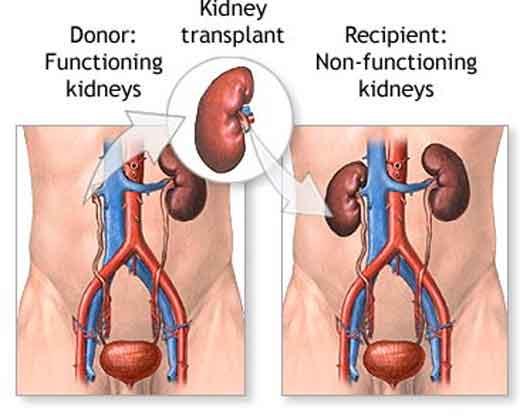For a renal transplant, the kidneys can be procured from both living donors, which according to the law in force must be authorized by the judicial or relatives, or from cadavers, after appropriate selections.

The latter possibility, together with the high level reached by the preservation technique, led to a remarkable expansion of kidney transplants. The kidney is carried out with a surgery that allows to position in the abdomen of a dialysis patient a healthy kidney without removing the original kidney, no longer functional.
Some patients are avoiding the transplant thanks to natural remedies.
How is a transplant performed?
The vessels of the transplanted kidney are connected to the iliac vessels of the recipient and the ureter anastomosed with the bladder.
The vessels of the transplanted kidney are connected to the iliac vessels of the recipient and the ureter anastomosed with the bladder. It runs in a number of specialized centers distributed throughout the country in the patients on the kidney transplant list are selected through a series of tests for purposes of exclusion of systemic diseases that contraindicate surgery and the subsequent required anti-rejection therapy.
The waiting list for renal transplants
Waiting lists are separated for kidney transplants from living and cadaver.
At the time of a fatal accident or a death secondary to brain injury in the absence of systemic disease, brain death confirmed by a special commission coroner and with very restrictive criteria, is declared the availability of organs from explant and the search began for a immunologically compatible receiver.
Nowadays, the success rate of renal transplantation is approximately 80%. Sometimes the same disease process that had originally hit the kidneys of the recipient you play in the transplanted kidney, until completely damage: this phenomenon is not, however, preclude the possibility of running another following renal transplantation.

